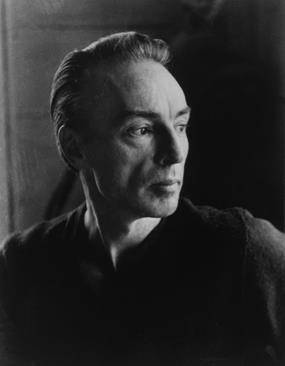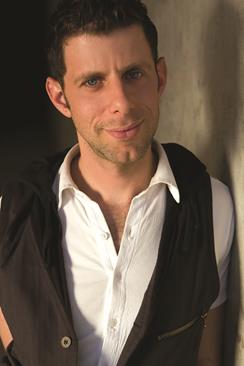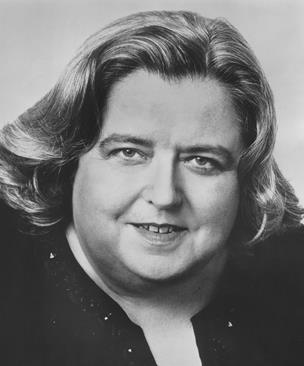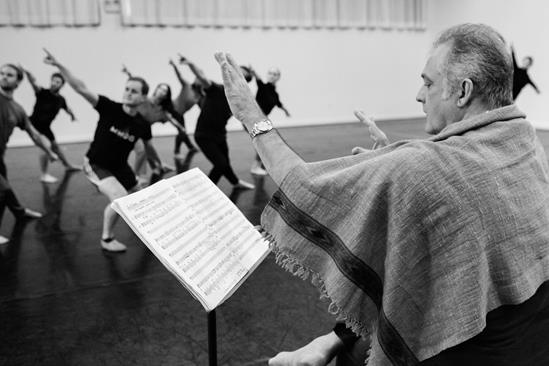The Food Chain
In today's arts organizations, who gets nourished: artists or administrators?
Forty years ago, between 1976 and 1982, I worked for the New York State Council on the Arts as director of its theater program. It was a time of immense optimism and growth for emerging arts institutions, including American opera companies. Funding was plentiful in both public and private sectors. Particularly from a New York perspective, people naively assumed that the wildly generous state arts budgets backed by Governor Nelson Rockefeller would continue without end. The expansive arts economy he promoted (which included establishing the National Endowment for the Arts) died quickly once Reaganism took hold, but prior to 1980 a “chicken or egg” question about the arts — “Who comes first: the institution or the creative artist?” — seemed to have been answered in favor of artists. Decades later, that question is being asked again.
Performing arts institutions have grown up. We’ve all benefitted from longer seasons, new buildings, expanded budgets and staff, sophisticated trustee support, increased community involvement and a diverse repertoire. But changing priorities and a growing benign neglect toward all classical arts made the economics beneath that expansion fragile. Streams of essential arts funding began to erode in the 1980s and 1990s, but the institutions had to keep going. There were payrolls and community expectations to meet. Managements had no choice but to ask — often under extreme economic pressure — what can be produced, and what cannot? Issues of sustainability sparked an urgent pursuit of inventive managements that often superseded the presumed centrality of artists. Did this primacy of arts managers over artists — in operatic terms, the general director mode — become a case of administrative short-term gain leading to long-term loss?
Anne Midgette, The Washington Post’s classical music critic, did not mince words about this in a 2017 column: “I’m not the only one to notice that our largest performing arts institutions have become fundamentally inartistic bureaucracies — organizations in which art has become a commodity and artists, the content providers, have to fight hard to push through new ideas. ... Companies have to work so hard to maintain their status quo, to keep the funding coming in and the performances going on, that many of them have lost sight of a truly creative approach.” Diane Ragsdale, once of the Mellon Foundation, has even suggested that arts managements under stress have “managed risk by disempowering artists.”
Not just in opera, but for all our nonprofit arts communities — dance, theater, music and the visual arts, as well — those strong opinions have currency and need to be discussed. My own response is to return to some underlying concepts of the New York State Council on the Arts, circa 1976.
When I arrived on staff that year, some very wise division heads and board members spoke about the “food chain” as a concept guiding the Arts Council’s philanthropic approach. (In those days, NYSCA defined itself as an agency for government arts philanthropy, not a conduit for economic redevelopment or other causes.) In the food chain, consideration of artists came first, then the producing institutions, and finally the audience at large.
The public funding levels of that era seem fantastical in 2018. In 1976, Arts Council support across New York State represented, on average, 11 percent of the annual operating budgets of its grantee theaters. Once support from the NEA and other federal or local arts-related agencies was added to the mix, it was not unusual for government funding to cover one-third of a typical arts organization’s budget.
NYSCA used its economic clout to emphasize artist primacy. Nearly all its funding of nonprofit producing organizations was restricted to artist compensation, and in most cases, grants were contractually capped by the amount an applicant organization budgeted for artist fees. (What a contrast to our current era, when income inequality within major arts organizations can match corporate sector extremes.)
NYSCA’s admittedly elitist approach had an interior logic. Artists create, then institutions curate and produce the work, and finally audiences determine its ultimate fate. For the purpose of funding, the Arts Council saw its core mission primarily as support for creative expression at the start of the sequence, to ultimately benefit the public later on. If audience concerns became the initial or primary focus (as occurs so often today), it would reverse the agency’s mission-based priorities.
I found a welcome echo of this old approach in a New York Times interview with Yuval Sharon, an OPERA America board member and founder of The Industry, an experimental opera company in Los Angeles. “As arts leaders,” Sharon said, “we’re supposed to be the ones that create our audience. I see a resistance to that. It’s the idea that, ‘Well, it’s what our audiences want.’ Well, it’s not always about what the audience wants. It’s about what the audience doesn’t yet know they want.”
Artists leading institutions toward “what the audience doesn’t yet know they want,” defines a creative ideal. There’s ample American precedent for this artist-driven approach, none greater than the New York City Ballet, founded by George Balanchine and Lincoln Kirstein in 1948. Dance audiences at that time “didn’t know they wanted” a classical ballet company devoted almost entirely to new work created by one choreographer. At its birth, NYCB seemed an unlikely prospect. Kirstein and Balanchine had launched three other ballet companies between 1933 and 1948. They all failed economically and often critically. (Even an alliance turning the company into the resident ballet troupe of the Metropolitan Opera didn’t last.) But Kirstein and Balanchine never compromised their relentless determination and vision.
A board member from the peak years of Balanchine’s NYCB told me that board meetings were generally organized around an essential question: “What does George need?” Not “What does George want?” but “What does George need?” “Everything would flow from that question,” he said, “and if we got the answer right, all would be well for New York City Ballet.”




Of course, it helped that the company’s general director was one of America’s greatest cultural essayists, while its artistic director was a 20th-century genius on par with Stravinsky. A joke at the time was that Kirstein knew everything there was to know about ballet, while Balanchine could read a spreadsheet. Few American arts organizations of any size today are grounded in such unshakable artist-first commitments. There are still shining examples, such as the Mark Morris Dance Group, but even Balanchine knew that times would change, acknowledging in a devastating late-career quote, “Après moi, the Board.”
If there’s anything one learns in arts funding, it’s that each producing organization is unique to its own circumstances. The New York City Ballet model that applied in Balanchine’s lifetime is only a historic point of reference. But making artists both central and truly empowered within arts organizations is one essential step toward resolving institutional malaise.
There are many possible variations on this theme. In 1989, the New York Public Library asked me to take charge of its performing arts library and museum at Lincoln Center. Across the 20th century, the NYPL had assembled one of the most comprehensive performing arts archives in the world. It was already a vast collection of 20 million items, but the institution itself was under a deep shadow. Its Lincoln Center facility was physically compromised and desperate for both funding and renewed purpose. The task at hand was to take a unique archive of the performing arts and “produce” it as if it were a performing arts institution. The board and I agreed that the key to a stable future was to frame everything the Performing Arts Library did around artists.
As with any arts organization, nearly everyone entering the library at Lincoln Center was there to explore something an artist did or does. Whether the public came to watch a performance video or study a composer’s annotated score, it was all about discovering someone else’s imagination and work on stage. In the institution’s food chain, everything flowed from the creative documents the library had assembled, preserved and continued to collect. As much as possible, we encouraged ownership between the performing arts communities and the building’s collections, exhibitions and stage, making it relatively easy for actors, singers, directors, dancers, musicians, designers, choreographers, composers, stage managers or anyone in the field to “do their homework” there. Playwright John Guare and stage designer Ming Cho Lee (among others) joined us to run new programs. Artists turned the whole concept of a traditional library inside out, and by their very visible presence, the public followed, along with indispensable financial support from both government and private sectors. By 1998, 400,000 people a year were visiting the collections, performances and exhibitions in that building.
A library is not an opera company, but I’m convinced that artist centrality, inclusion and risk apply universally to the good health and mission of all arts organizations. Aside from Balanchine’s example, think of Stokowski’s Philadelphia Orchestra or Koussevitzky’s Boston Symphony — legendary ensembles run by conductors of uncompromising vision, determination and authority, with boards to back them up. They all but reinvented both their institutions and symphonic music in the 20th century. The 30-plus years of Sarah Caldwell’s Opera Company of Boston still shine as an artistically glorious (if undeniably eccentric and reckless) feast of challenging classical and contemporary premieres mixed with casting debuts that could rival international companies. Beverly Sills once said that it’s better to have a 10-year career as Callas than a 30-year career as a lesser artist. The same might apply to some arts organizations.
Today, our opera companies need creative idealism of equal unstoppable passion. For so many visionaries, in and out of opera, audience expectations did not define their institutions or programming. The public came along for the journey in the wake of artistic leadership.
This article was published in the Spring 2018 issue of Opera America Magazine.

Robert Marx
Robert Marx is president of the Fan Fox and Leslie R. Samuels Foundation in New York City, and has worked extensively in theater and opera as a producer, consultant and essayist.




